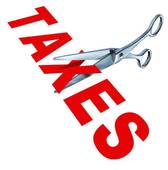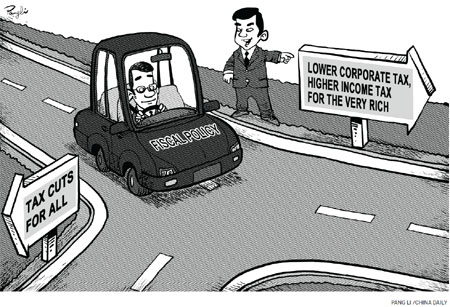Good morning Ms. Teetart and fellow classmates. Last week in
economics we had discussed a good amount of topics, but for this blog today I would
like to focus on fiscal policies and how they are used in an economy. So to
refresh our minds the two policies that were discussed last week were
contractionary fiscal policy and expansionary fiscal policy.
Fiscal policies can be defined as a government action to
influence an economy through the use of taxation and spending. These types of
policies are used when the people who make policies believe that the economy
needs outside help to reach a desired point. Typically the government’s main
goal is to maintain steady prices, an employment level, and a growing economy.
And if they see that any of these areas aren't doing so well some type pf
policy will be put into action. Fiscal policies can be used to either help
stimulate an economy or to slow down an economy that is growing at a very rapid
pace.
When
an economy is in a recession, expansionary fiscal policy is in order. Typically
this type of fiscal policy results in increased
government spending and/or lower taxes. A recession results in a recessionary gap –
meaning that aggregate demand is at a level lower than it would be in a full
employment situation. In order to close this gap, a government will increase their spending which will increase the aggregate demand curve
since government spending creates demand for goods and services. At the same
time, the government may choose to cut taxes , which will affect the aggregate demand curve by allowing consumers to have more money to spend. The actions of this expansionary fiscal
policy would result in a shift of the aggregate demand curve to the right,
which would result closing the recessionary gap and helping an economy grow.
On
the other hand Contractionary fiscal policy is essentially the opposite of
expansionary fiscal policy. When an economy is in a state where growth is at a
rate that is getting out of control, contractionary fiscal policy can be used to
help bring it to a more sustainable level. If an economy is growing too fast ,
an inflationary gap will form. In order to eliminate this inflationary gap a
government may reduce
government spending and increase taxes . A decrease in spending by the government will directly
decrease aggregate demand curve by reducing government demand for goods and
services. Increases in tax levels will also slow growth, as consumers will have
less money to consume , thereby reducing the aggregate demand curve.
Overall,
fiscal policy is a type of economical intervention where the government injects
its policies into an economy in order to either expand the economy’s growth or
to contract it. By changing the levels of spending and taxation, a government
can directly or indirectly affect the aggregate demand, which is the total
amount of goods and services in an economy.
Video
Work Cited
Expansionary
Fiscal Policy-
Contractionary
Fiscal Policy-
Video
about the two policies-





